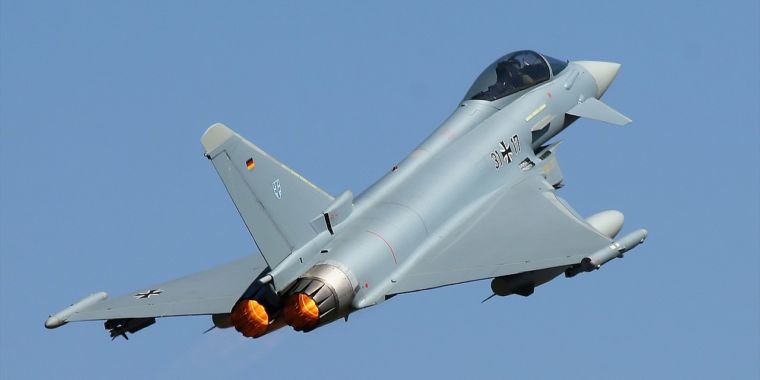Germany’s Typhoon problem: Only four fighters can be made combat ready
https://ift.tt/2GidBfg

SITREP: Germany’s Typhoon problem.
If you thought the US Department of Defense’s procurement adventures with the F-35 and other big-budget weapons systems are bad, you might want to check out what’s going on in Europe, where defense procurement battles have left most of the German Luftwaffe grounded for lack of parts.
Last week, at the annual Charlemagne Prize ceremony in Aachen, Germany—in which French President Emmanuel Macron was recognized for his efforts on behalf of European unity—German Prime Minister Angela Merkel pronounced that Europe could no longer depend on the United States for its protection. “Europe has to take its destiny into its own hands,” Merkel said. “That is the task of the future.”
Merkel has given this message before. But if Europe is to take its destiny into its own hands any time soon, Germany has a lot of work to do—the Bundeswehr, Germany’s defense ministry, is suffering from multiple readiness crises in a culmination of years of cost-shaving and poor management decisions. And the latest symptom to emerge of that crisis is the dwindling number of actually functional fighter jets that the Luftwaffe, Germany’s air force, can actually call combat ready. For the Eurofighter Typhoon, Germany’s main fighter aircraft, that number is four—out of a total of 128.
According to a report in Der Speigel, the Bundeswehr has claimed in an official report to the Bundestag (Germany’s legislature) that 39 Typhoon fighters were designated as ready for missions last year. But that report named any aircraft that was capable of flying as being “ready.” In fact, only 10 aircraft currently have all their systems functioning, because of a problem that has plagued the defensive aid subsystem (DASS) of Germany’s version of the Typhoon.
One component of the DASS is a wing pod that contains the aircraft’s electronic countermeasures (ECM) equipment—its gear for jamming the radar of incoming missiles—and parts of the aircraft’s electronic support measures systems, which include radar lock warning and target identification.
During the development of the Typhoon, Germany decided to break off from the Eurofighter consortium and fund the development of a domestically-built DASS by Daimler Aerospace (DASA). Eventually Germany re-entered the fold, and DASA was absorbed into the European defense conglomerate EADS. But the money-saving maneuvering has continued, as the Bundestag strove to reduce stock in repair parts and opt for “just-in-time” ordering.
Unfortunately, the DASS pods on Germany’s Typhoons have been failing because of coolant leaks. And the supplier for the part needed to repair the leak is no longer in business. As the rest of Eurofighters’ customers are upgrading their DASS systems to the Praetorian DASS from the Italian defense company Leonardo, the factory for the part was sold—and Germany, which did not opt for the upgrade, is now left without a supplier.
Cost-cutting procurement strategies have caused problems elsewhere over the past year for the Bundeswehr:
- The German Navy has had to refuse delivery of the first of its new class of frigates after the ship failed sea trials, and only five of the Navy’s existing 13 frigates were capable of being deployed.
- The last available German submarine was pulled out of service for repairs, as all the other submarines in the fleet sit in drydock or sit idle due to lack of replacement parts. (One of those submarines may now be back in service.)
- The German Army was found to lack enough tanks and armored personnel carriers, or even enough basic equipment for soldiers, to fulfill its commitment to NATO’s Very High Readiness Task Force at the beginning of 2019. While 105 out of 244 Leopard 2 tanks were called “ready for use,” only nine could be fully armed for the VHRF.
- Only 12 of 62 Tiger attack helicopters and 16 of Germany’s 72 CH-53 cargo helicopters were available for exercises and operations last year; the rest were grounded for maintenance.
- At any time over the last year, only three of the Bundeswehr Airbus A400M transport aircraft were ready to fly.
The only saving grace for the Bundeswehr is that with the wind-down of NATO support in Afghanistan, there’s no immediate combat mission for the German military. And as Der Speigel’s Matthias Gebauer was told by a Bundeswehr source, “We can say with a good conscience that large parts of the [German armed forces] are mission ready, because there is currently no mission.”
Listing image by Krasimir Grozev
Tech
via Ars Technica https://arstechnica.com
May 15, 2018 at 07:49AM
